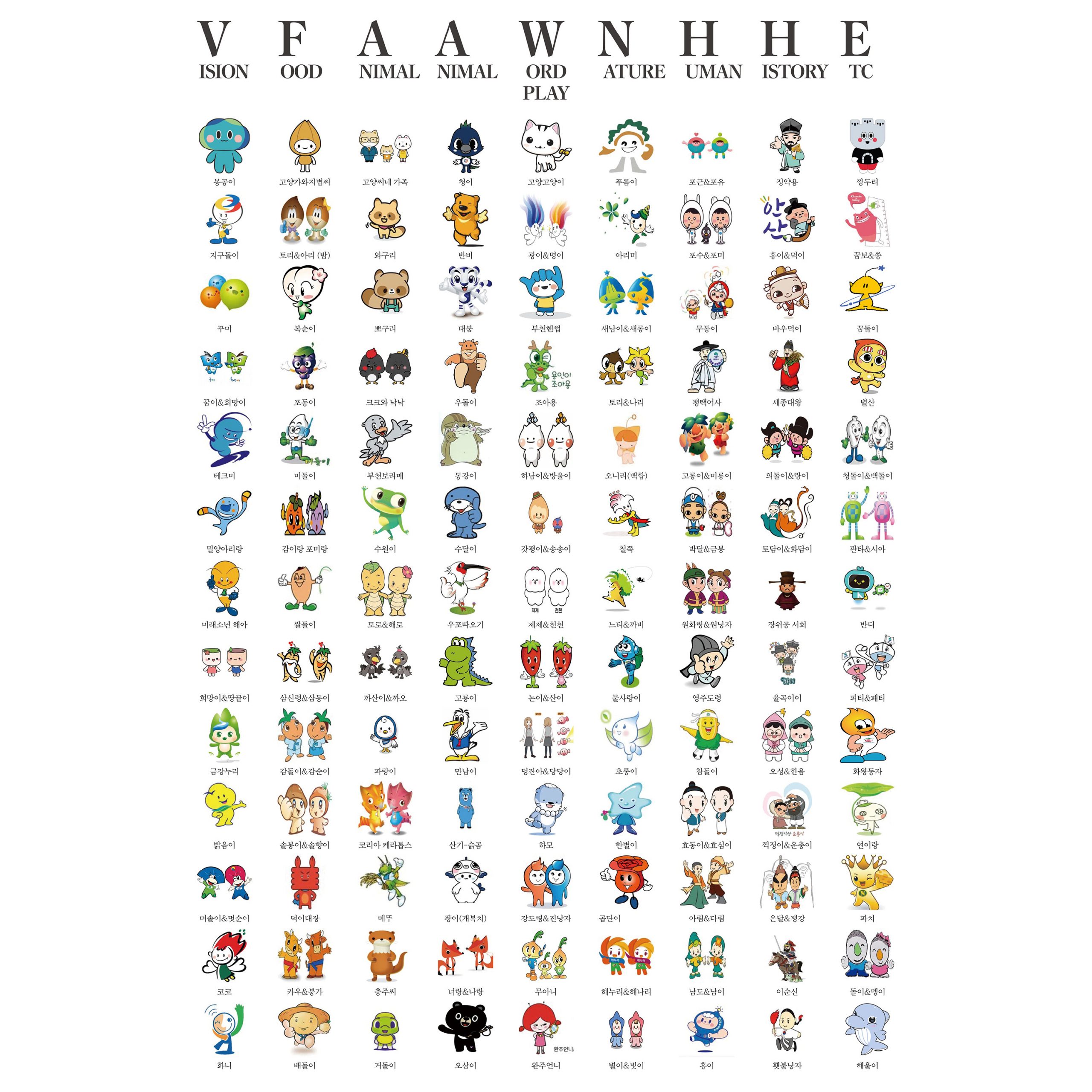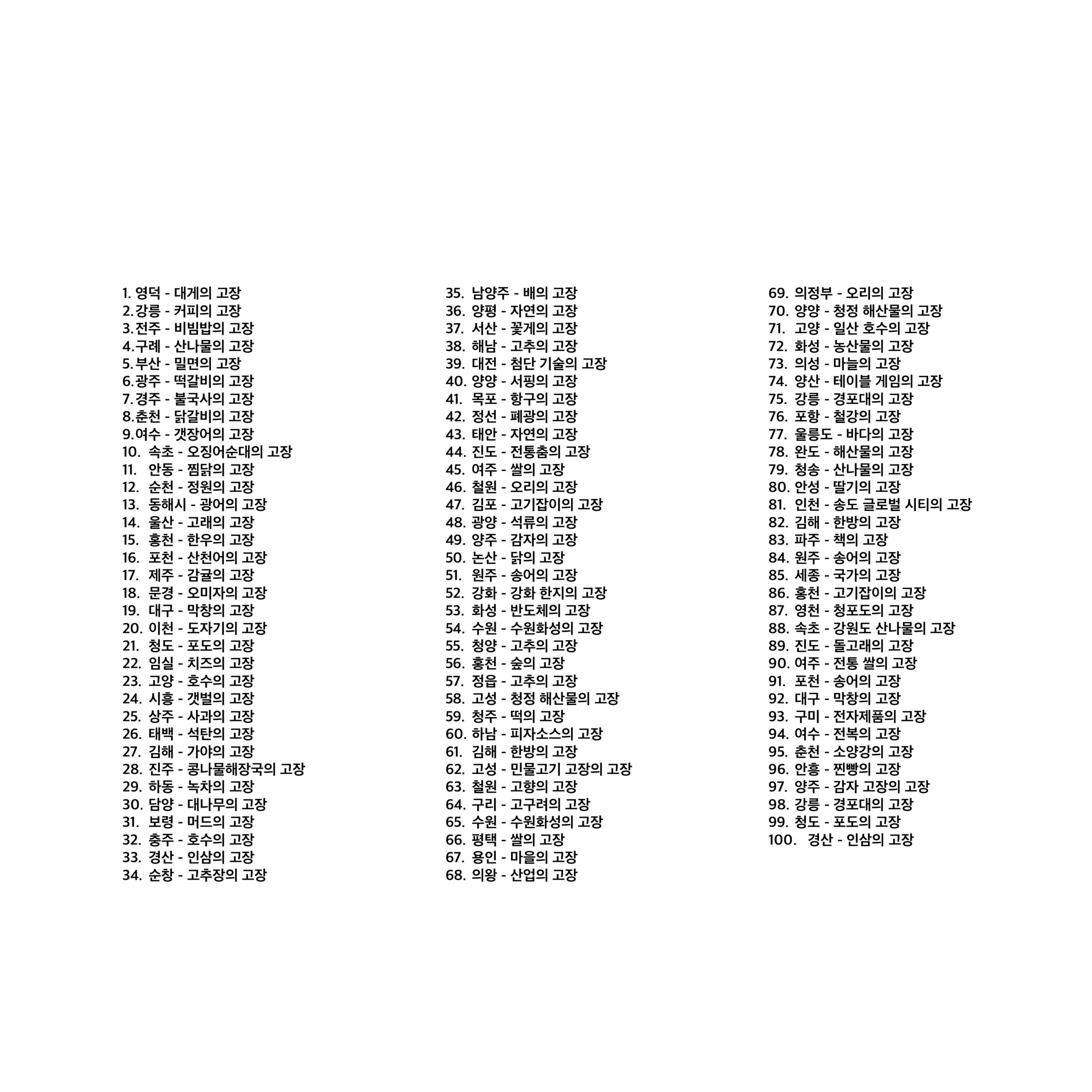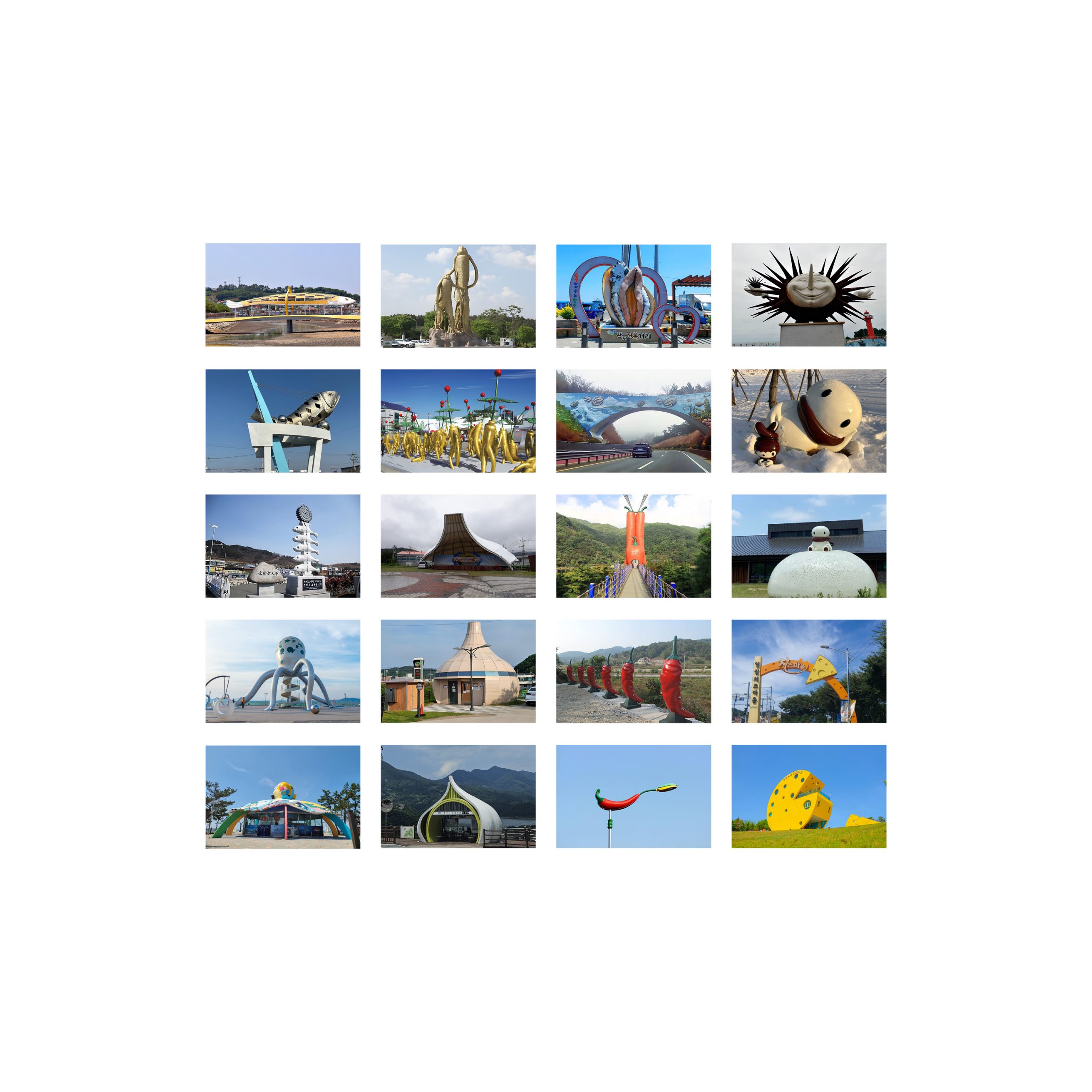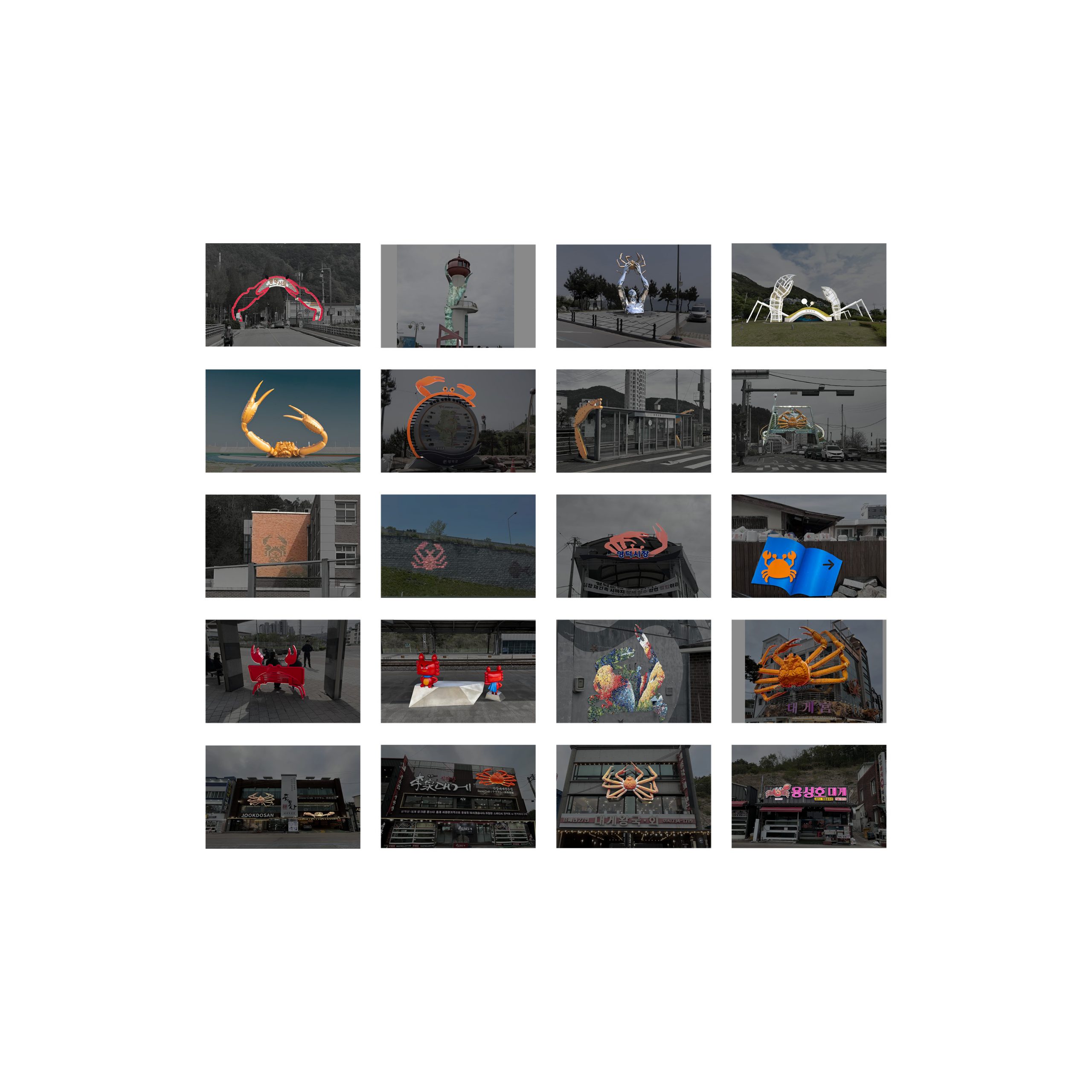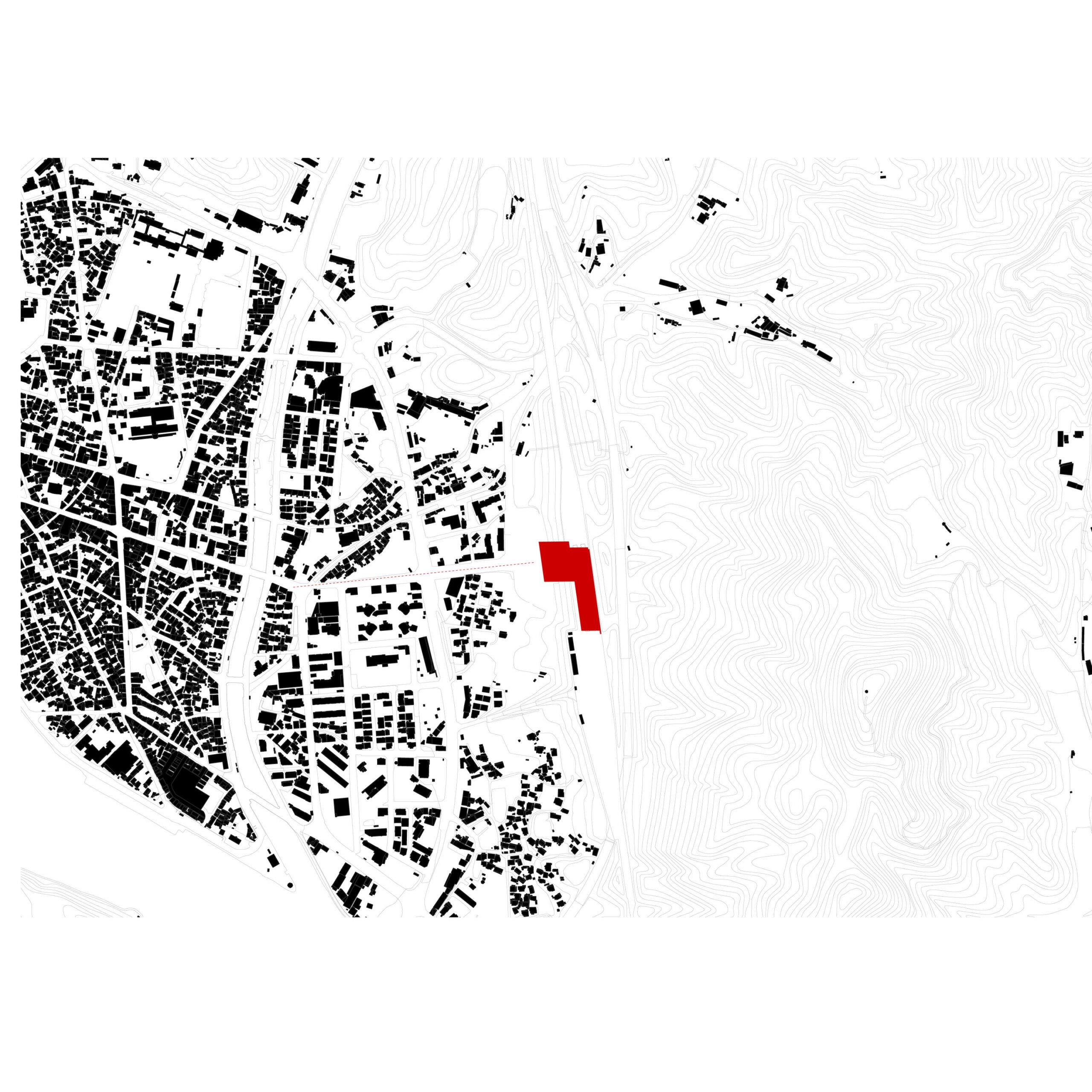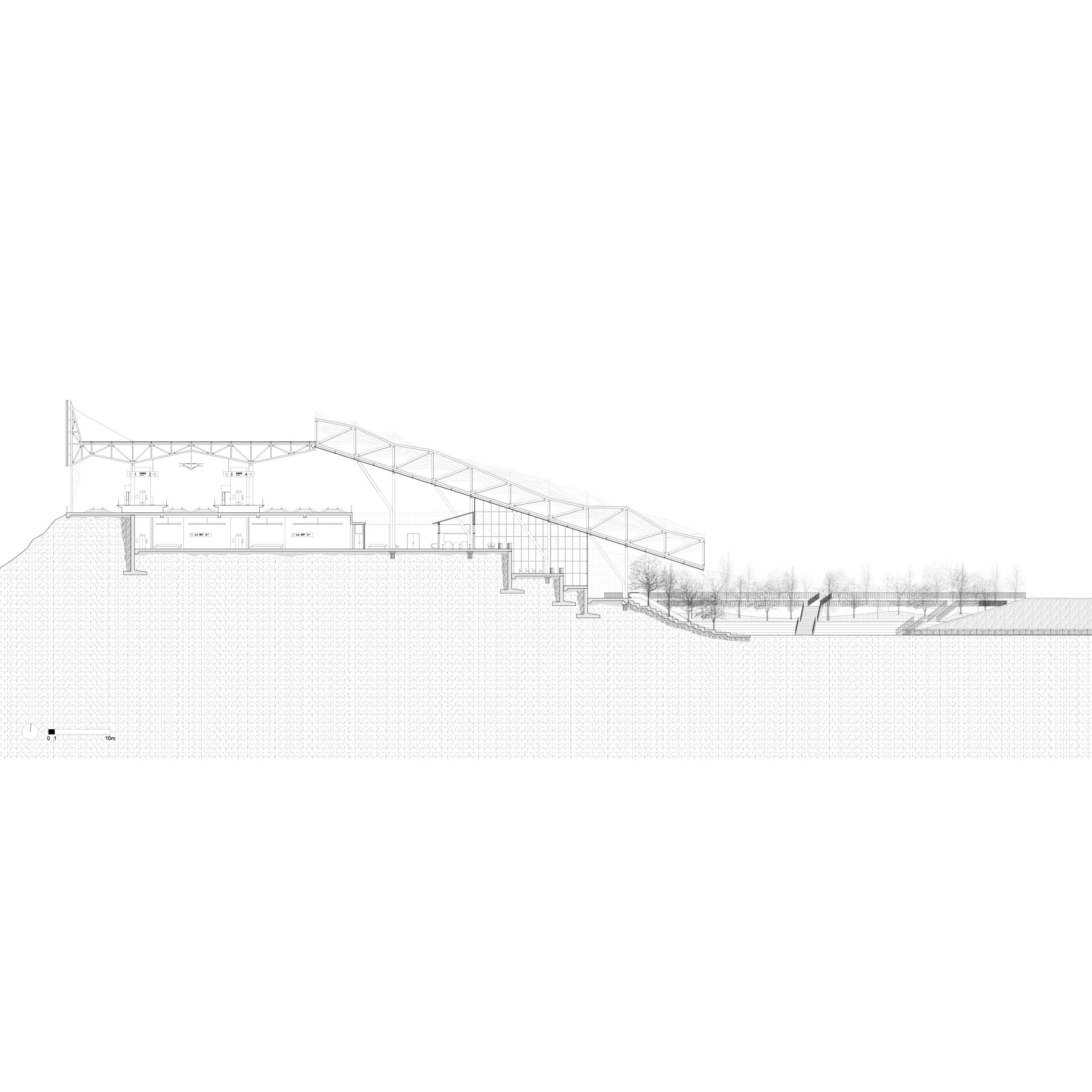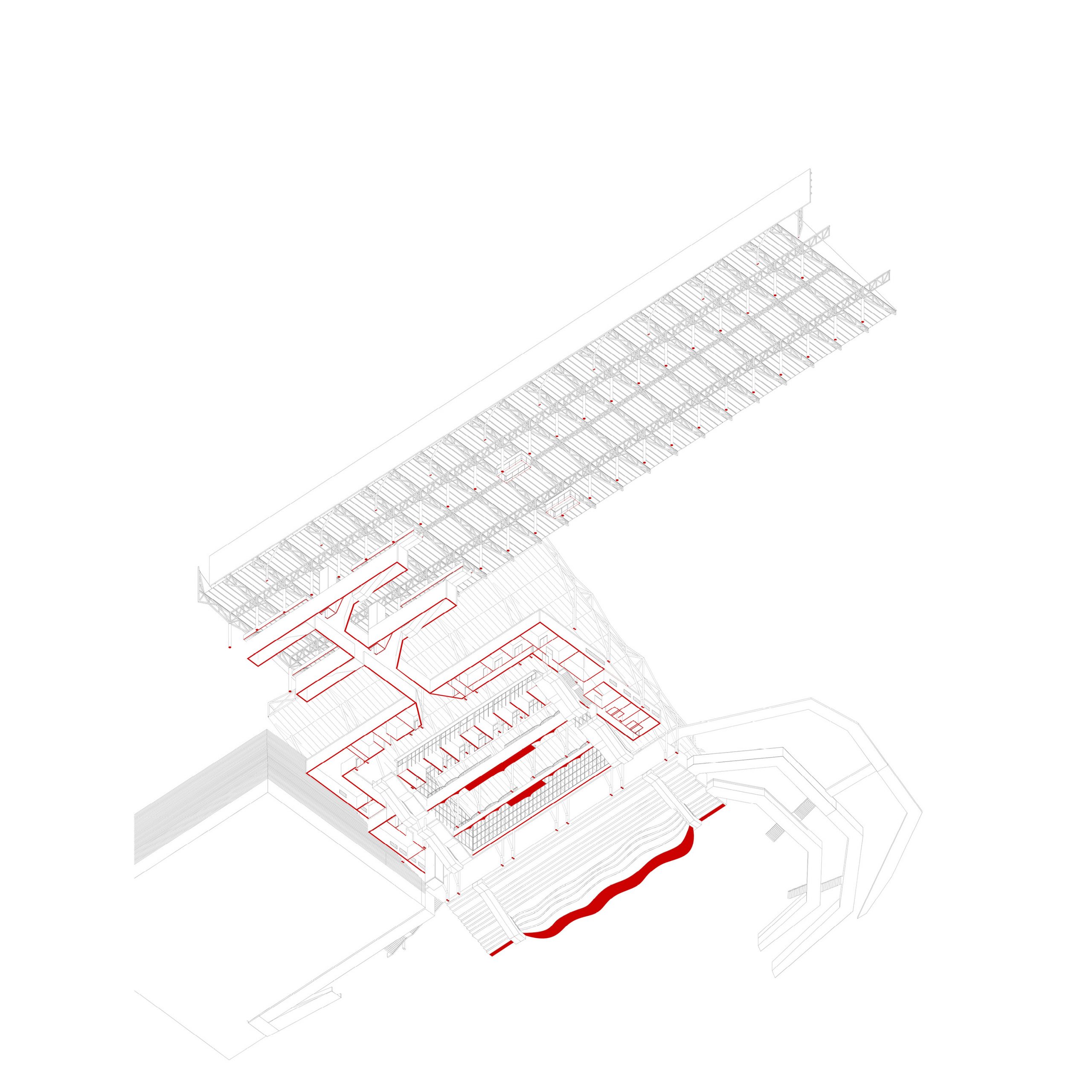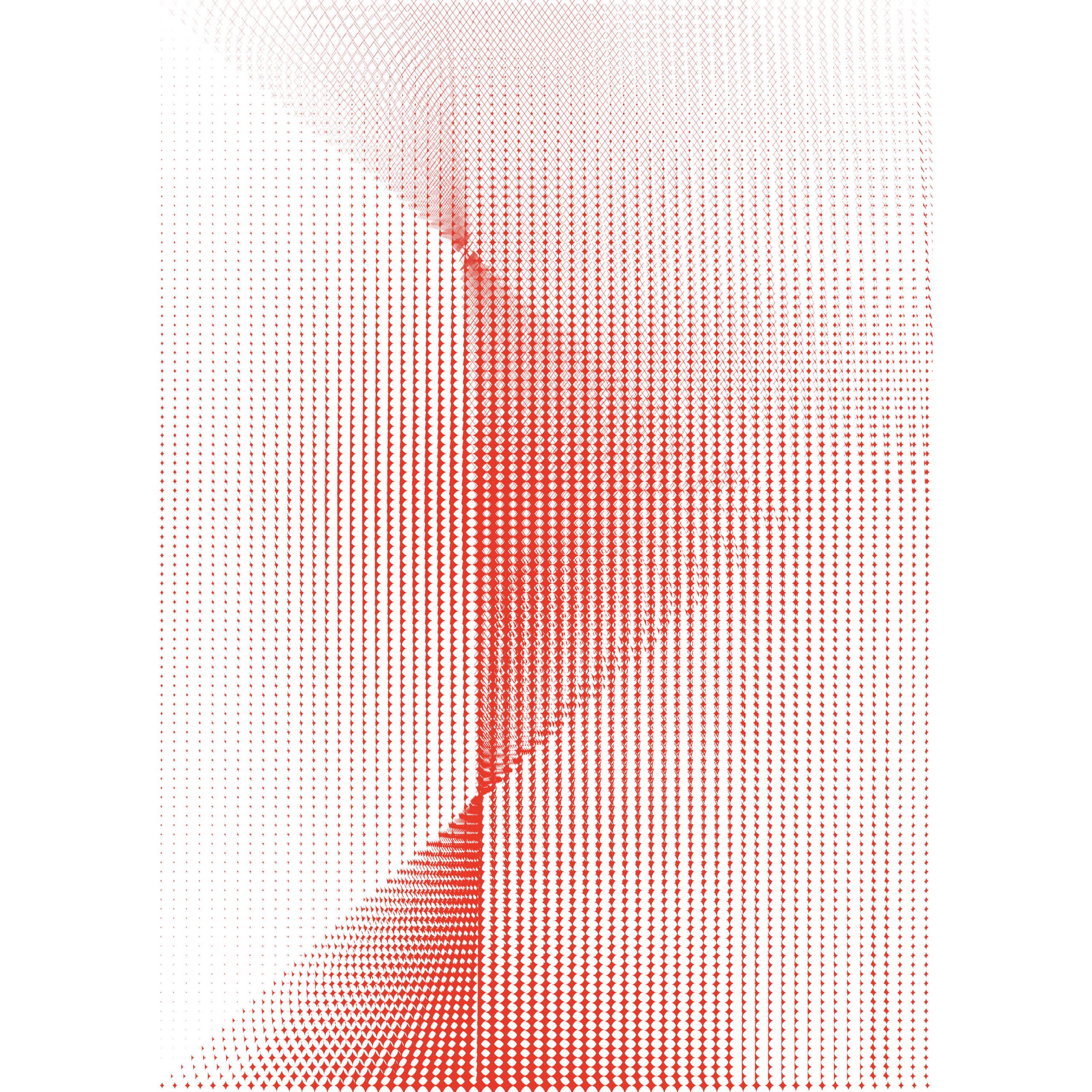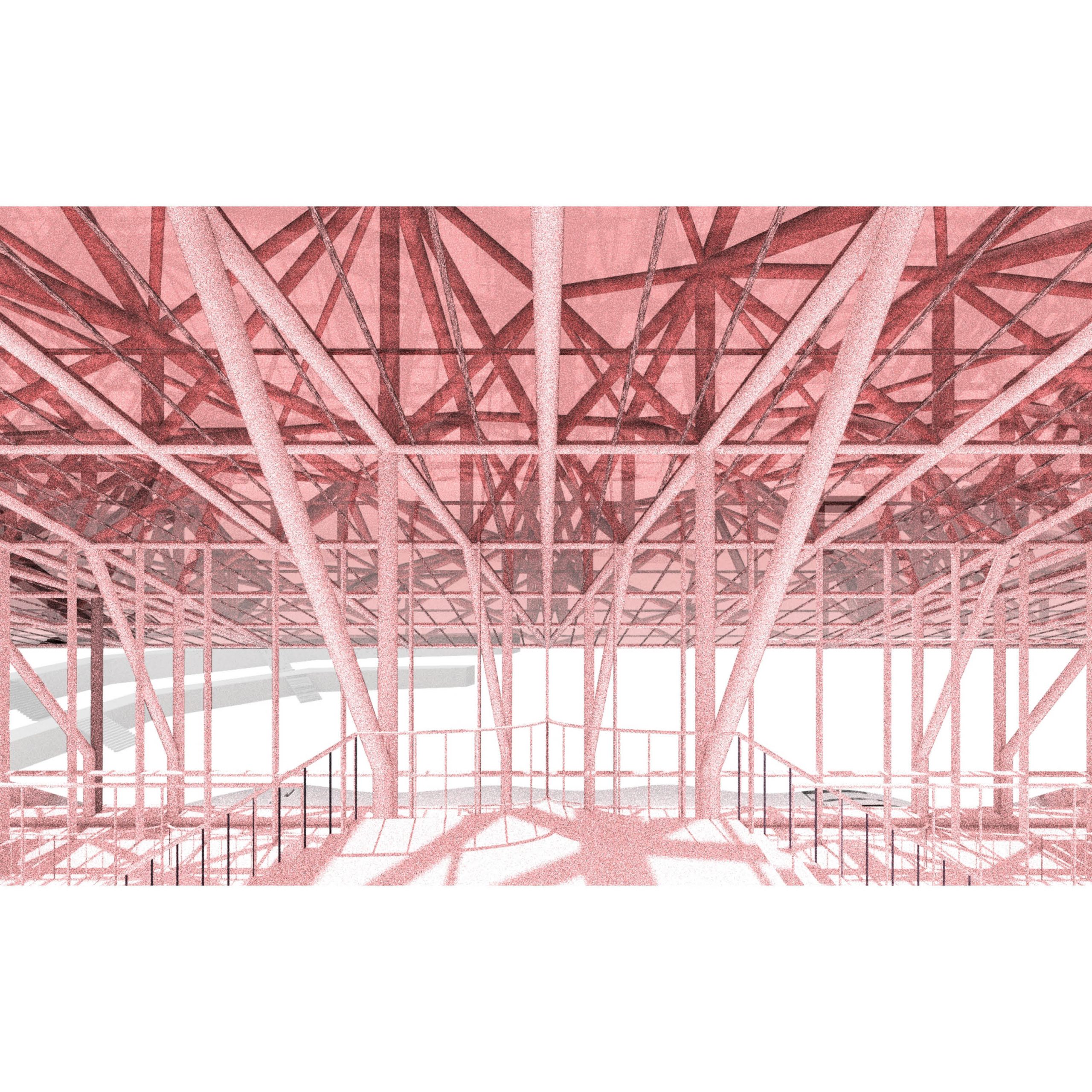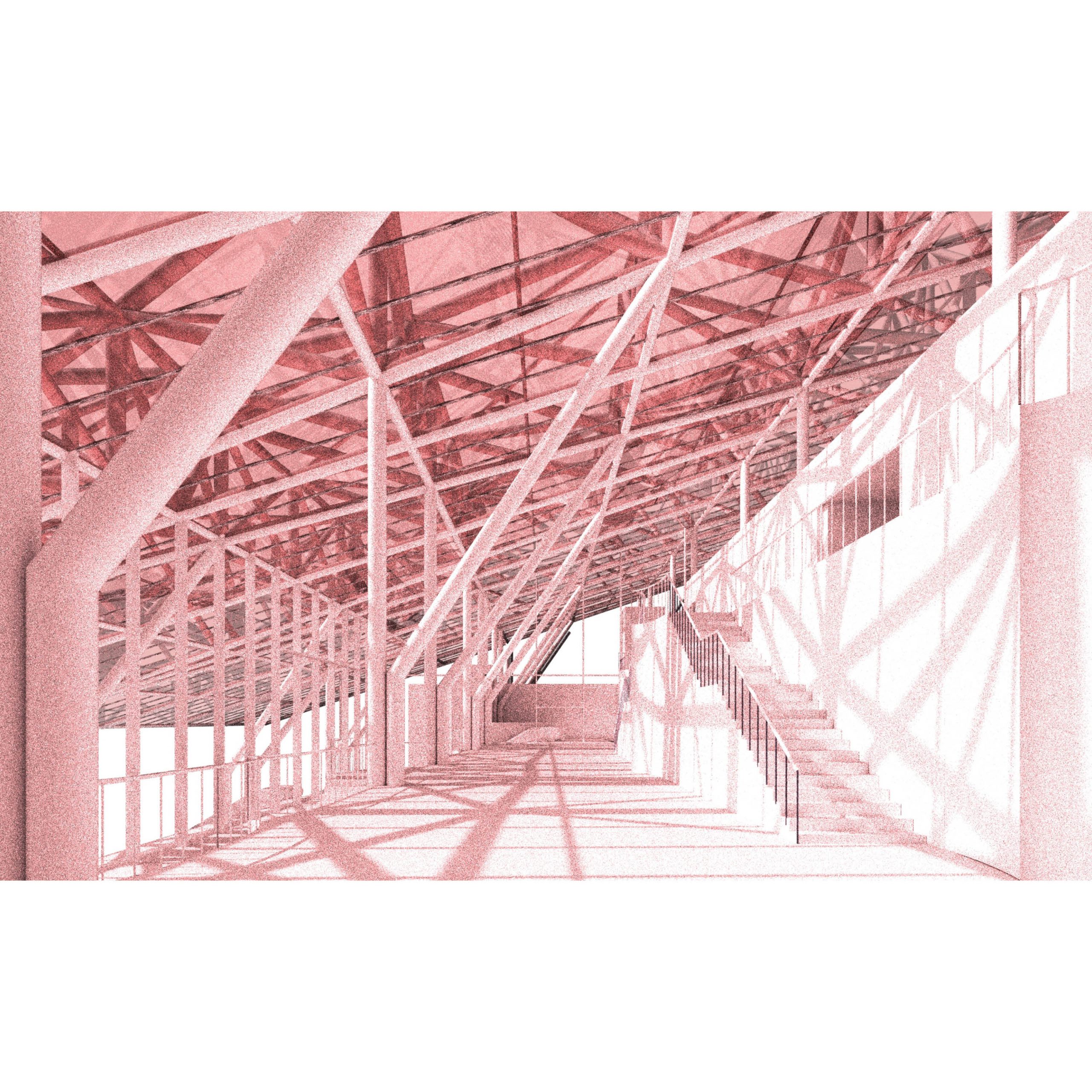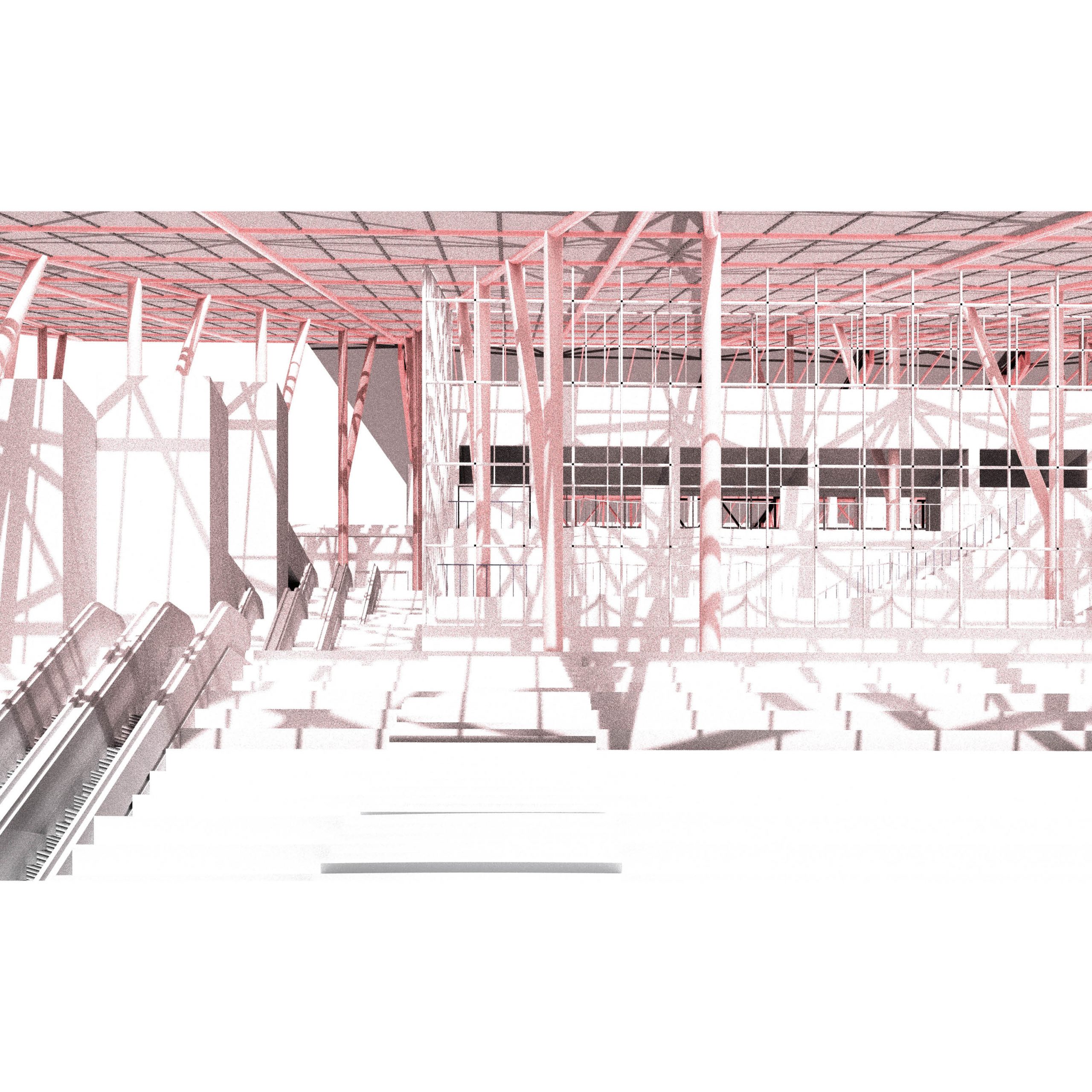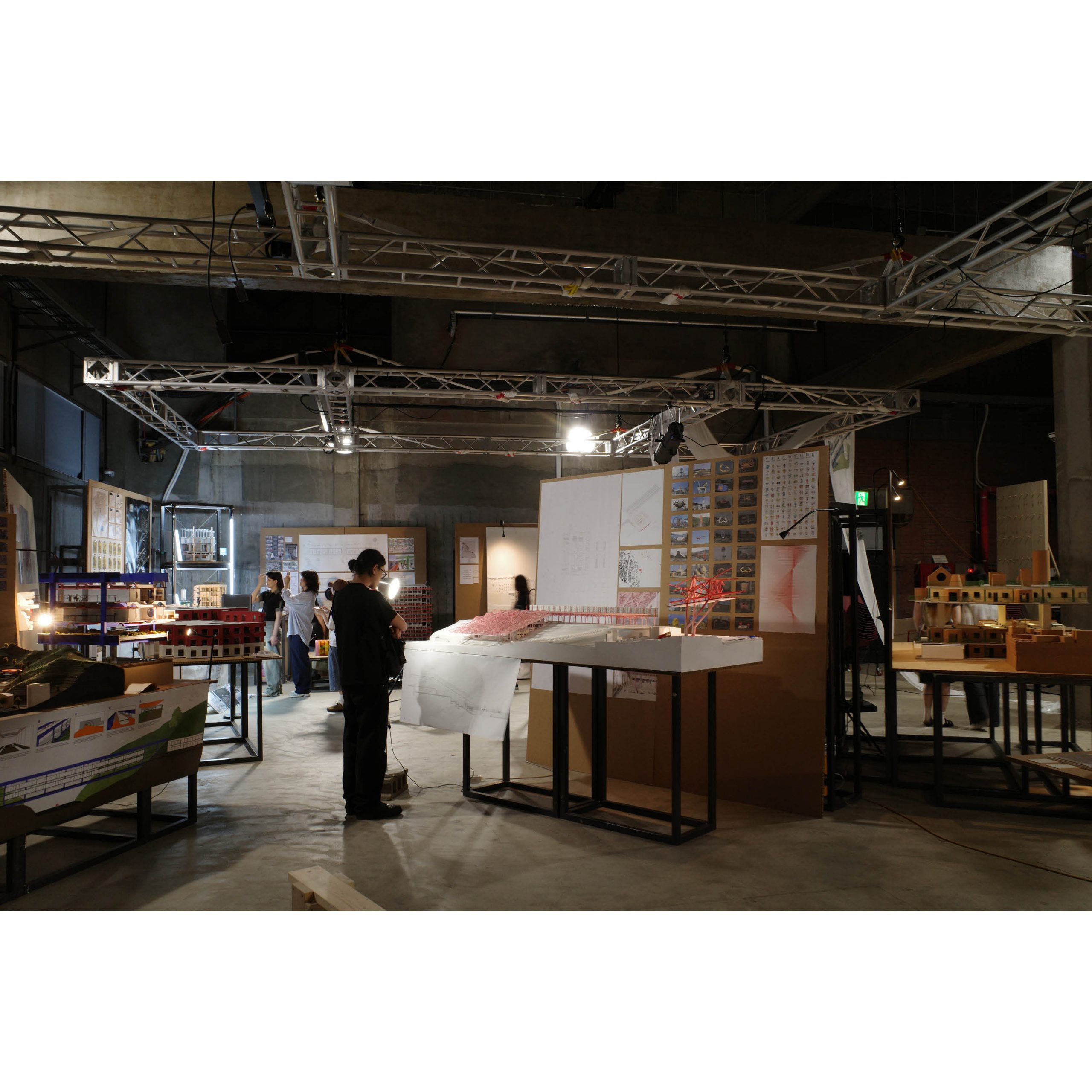조경진 _ 영덕역
청양에는 세계에서 가장 큰 고추 모양의 다리가 있고, 의성에는 마늘 모양의 광장이 있으며, 영광의 교량은 굴비 모양의 지붕으로 덮여있다. 대부분은 지독할 정도로 구상적이고, 상업적이며, 동시에 일상적이다.
지방은 빠르게 사라지고 있다. 인구의 절반 이상이 수도권에 집중되고, 다수의 지방은 소멸 위기에 놓여있다. 이에 대한 대응으로 다양한 도시재생 사업이 추진되지만, 그 이면에는 관광 산업이 중심에 있다. 그리고 지역 고유의 매력을 부각시키려는 노력은 대개 ‘인위적인 지역성’이라는 형식으로 귀결된다. “00의 고장”, “00의 마을” 같은 표제어, 지자체별로 기획된 캐릭터 그리고 키치한 상징 조형물들이 도시 곳곳을 채운다.
본 프로젝트에서는 이러한 배경 속에서 지방의 생존전략인 인위적 지역성과 키치를 조롱하는 대신, 지역을 돌아가게 하는 현실적인 생명력으로 바라보고, 이를 건축적으로 풀어내고자 한다.
설계 대상지는 경상북도 영덕의 동해선 영덕역이다. 철도역이 대게라는 지역 상징성을 어떻게 담아낼 수 있을지 고민하는 것에서 프로젝트를 시작한다. 건물은 역사와 플랫폼, 두 개의 어긋난 직사각형으로 단순하게 구성되며, 경사진 지형을 따라 계단식 단 형태로 띤다. 그리고 그 위를 하나의 큰 경사지붕이 감싼다. 이는 시선과 동선을 고려한 현실적인 배치로, 대게를 의식하기보다 지역의 지형과 맥락에 집중한 선택이다.
이후 대게의 색, 질감, 표면의 패턴 등 구체적인 형질을 면밀히 관찰하고 이를 건축적으로 번역하는 데 주력한다. 동시에 대게가 지역 내에서 소비, 등장하는 방식에도 주목한다. 마을 곳곳의 공공디자인과 강구항 대게거리에서 등장하는 이미지들 모두 관찰된다. 게다리의 색, 등딱지의 질감, 스테인리스 찜기, 피어오르는 김, 뿜어내는 거품, 박달대게에 붙은 따개비, 간판처럼 매달린 대게들은 모두 다원적 참조의 대상이 된다. 이 과정에서 갑각류의 구조나 몸통–다리 구성처럼 ‘게’만의 건축적으로 활용하기 쉬운 형태적 특수성은 의도적으로 배제한다. 이는 대게에 국한되지 않고, 지역의 상징물이 얼마나 구체적이고 다양한 방식으로 건축적으로 해석될 수 있는지 드러내고자 함이다.
건축적 표현은 추상과 구상을 오간다. 추출된 형질들은 어떤 부분은 기둥의 무늬로, 어떤 부분은 구체적인 형상으로, 또 어떤 부분은 공간의 구조로 전환된다. 관광객, 주민, 고속도로의 차들은 추상화의 정도를 규정하는 척도가 된다.
이처럼 완성된 영덕역은, 얼핏얼핏 게의 부분들을 닮는다. 게의 전체 형상이 노골적으로 드러나지는 않지만, 기둥의 무늬, 지붕의 형태, 벽면의 재질에 이르기까지 게를 구성하는 다양한 조각들이 건물 안에 녹아 있다. 어디라고 단정 짓긴 어렵지만, 분명히 게를 닮아있다.
In Cheongyang, there’s a bridge shaped like the world’s largest chili pepper. In Uiseong, a plaza is designed in the form of garlic, and in Yeonggwang, a bridge is topped with a roof shaped like a dried yellow corvina. Most of these are strikingly literal, commercially driven, and at the same time, deeply mundane.
The provinces are rapidly disappearing. More than half of the population is concentrated in the capital region, while many local areas are on the verge of extinction. In response, various urban regeneration projects are being implemented, but behind them lies a strong focus on tourism. Efforts to highlight the unique charm of each region often end up manifesting as a form of “artificial locality.” Slogans like “the town of ___” or “the home of ___,” along with municipality-created mascots and kitschy symbolic sculptures, now fill public spaces across the country.
This project does not mock such artificial locality and kitsch, which have become strategies for regional survival. Instead, it seeks to recognize them as expressions of practical vitality that keep the region running—and to translate that vitality into architecture.
The site for the project is Yeongdeok Station on the Donghae Line in Gyeongsangbuk-do. The design begins with the question: how can the local symbolism of the snow crab (daege) be incorporated into a railway station? The building is composed simply of two offset rectangular volumes—one for the station hall and one for the platform—arranged in stepped tiers to follow the sloped terrain. These are wrapped under a single, large sloped roof. Rather than overtly referencing the crab, this layout is a practical response to the site’s topography and circulation.
Next, the project focuses on closely observing and architecturally translating the specific qualities of the snow crab—its color, texture, and surface patterns. At the same time, attention is given to how the crab appears and is consumed in everyday life within the region. Public design elements scattered throughout the town and the imagery found along Ganggu Port’s snow crab street are all studied. The orange-red hue of crab legs, the bumpy texture of its shell, the stainless-steel steamers, the rising steam and bubbling foam, the barnacles clinging to the crabs, and the crabs hanging like signs—all of these become diverse and layered references. In this process, the crab’s more easily exploitable formal traits—like its segmented body or jointed legs—are deliberately avoided. The goal is not to literalize the crab, but to explore how any local symbol can be interpreted in a variety of architectural ways.
Architectural expression fluctuates between abstraction and figuration. The extracted traits appear sometimes as patterns on columns, sometimes as literal forms, and at other times as the logic of spatial organization. Tourists, locals, and passing highway traffic become the yardsticks that determine how literal or abstract the expressions should be.
In this way, the completed Yeongdeok Station subtly resembles parts of a crab. Its full form is never explicitly depicted, but throughout the building—in the column patterns, the roof shape, and the wall textures—fragments of the crab are embedded. It’s hard to pinpoint exactly where, but unmistakably, it feels like a crab.
